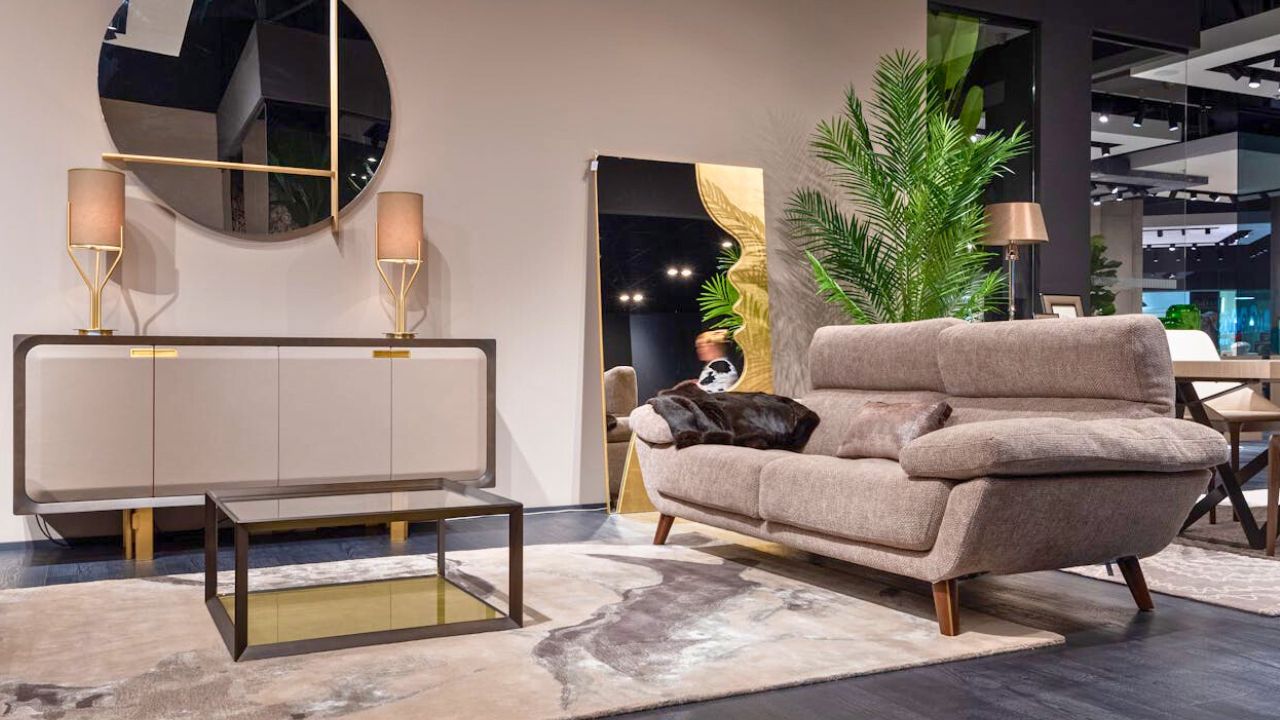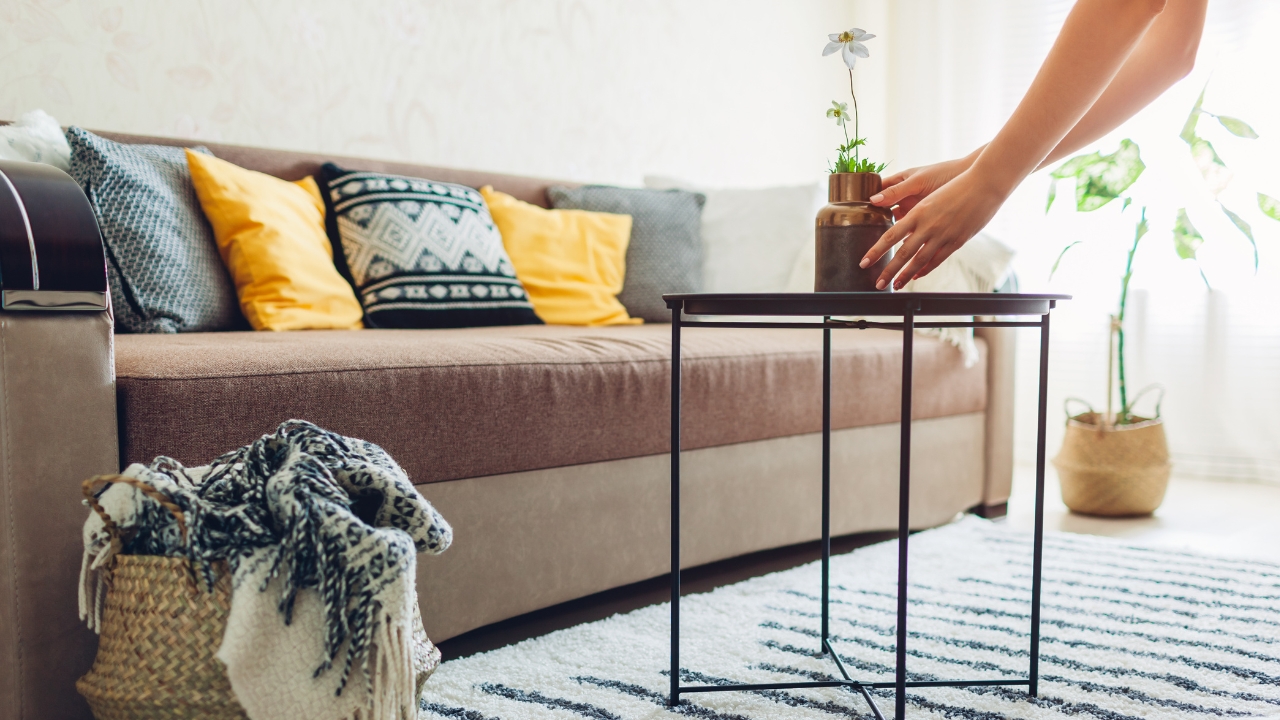Why your couch might be working against the rest of the room
Sofas do more than hold people. They set scale, dictate traffic, soak up light, and tell every other piece how to behave. If your living room never feels pulled together, the couch could be the quiet problem. The fix might be moving it, editing around it, or changing what sits with it—not replacing it.
Make the couch carry its weight without bossing the room.
Check scale against the room and the rug
If the sofa is huge on a small rug, the whole space shrinks. If the rug is big and the sofa is tiny, the room looks under-furnished. Aim for the front legs to land on the rug and at least one other seat to do the same. That connection anchors the group and stops your sofa from reading like a floating island.
Layer a larger jute under a smaller patterned rug if budget is tight.
Mind the arm style and back height
Roll-arm and tight-back reads traditional and cozy; track-arm and low-back reads modern and sleek. Style fights happen when the sofa’s lines don’t match the room’s architecture or the other big pieces. Bridge the gap with pillows that echo the room’s direction—clean, tailored covers for modern, softer linens for traditional. You can soften or sharpen the look without buying a new frame.
One long lumbar pillow often looks better than two squares. Cleaner, calmer.
Pull the couch off the wall
Shoving a sofa against the wall creates dead space in the middle of the room and kills conversation. Even six inches forward makes a difference. Angle it slightly if the room is a box. Fill the new space behind with a narrow console for lamps and baskets. You just created a layer and gave the room depth.
A console also hides cords so lamps can live in the middle of the room.
Fix the pillow and throw situation

Too many pillows in loud patterns make a sofa feel messy. Pick two colors from the room, use solid or textured covers, and swap cheap inserts for fuller ones. Keep pillows to the arms and the center open. Drape one throw neatly over an arm or fold it on the back—not wadded in the corner like a towel.
Washable covers are your friend. Life happens.
Adjust table height and distance
If the coffee table sits too far or too low, the sofa feels awkward. Aim for the table to be 16–18 inches from the front edge of the cushion and roughly the same height as the seat. Side tables should meet the arm so you’re not leaning into a void to set down a drink. Small ergonomic tweaks make the whole layout feel designed.
Round tables help in tight paths. Fewer bruised hips.
Balance the sofa with equal visual weight
A heavy, dark sofa needs visual weight across from it: a bookcase, a pair of chairs, or art sized to match. If your chairs are delicate and the sofa is a beast, add taller lamps and a larger rug so the room doesn’t tilt. Balance is more important than matching.
If the sofa is light, darker wood side tables keep it from floating.
Consider leg visibility and floor lines

Skirted sofas and low-slung bases can make a small room feel shorter. Sofas with visible legs show more floor and help a space breathe. If your frame hides the legs, lighten the load with a lighter rug and fewer heavy pieces around it. Show the floor elsewhere so the room doesn’t feel bottom-heavy.
Vacuum under the front edge. Dust lines read as shadow and shrink spaces.
Solve the fabric problem with covers or context
You don’t have to love the upholstery color to live with it well. Pull that color into two or three small items—art, a pillow, a throw—so it looks like a choice. If the fabric is tired, use a fitted slipcover in a neutral and let texture do the work. A soft waffle or brushed cotton reads better than shiny polyester.
Protect arms with neat, washable covers if kids or pets are in the mix.
Make a clear path around the seating
Traffic that cuts through the conversation zone makes the sofa feel like a blockade. Shift the layout so people walk behind the sofa or along one side, not across the coffee table line. Even a small change in angle opens up flow and stops that “squeeze through” feeling.
If you can’t move walls, move expectations. Place a plant where you don’t want feet.
Your couch sets the tone. Match it to the rug, pull it off the wall, fix pillows and table heights, balance its weight, and give people a clear path. The rest of the room will finally fall in line—not because you bought new everything, but because the biggest piece stopped fighting the plan.
Like Fix It Homestead’s content? Be sure to follow us.
Here’s more from us:
8 upgrades that look like you spent thousands (but didn’t)
9 small changes that instantly make a house feel high-end
*This article was developed with AI-powered tools and has been carefully reviewed by our editors.







